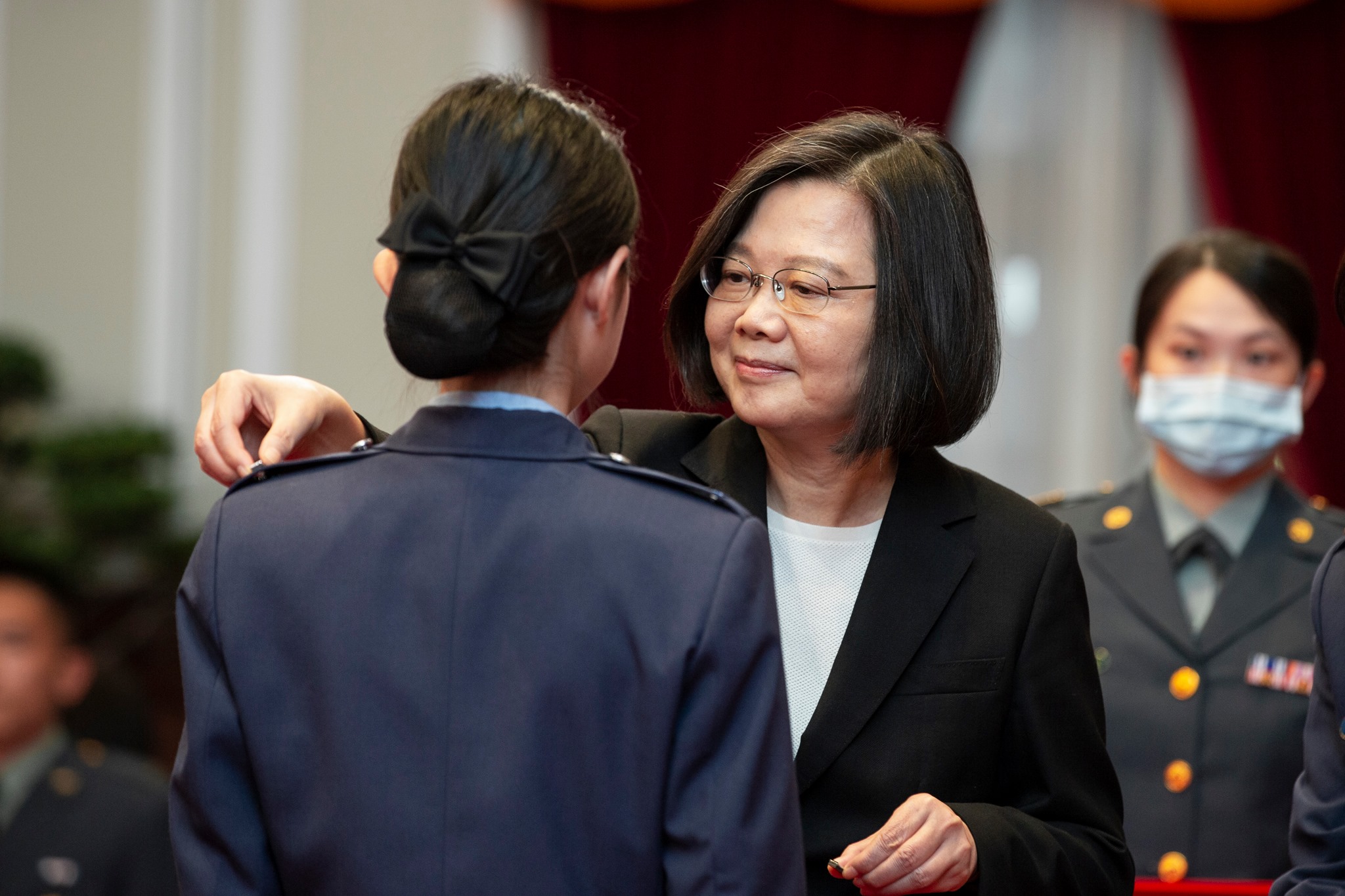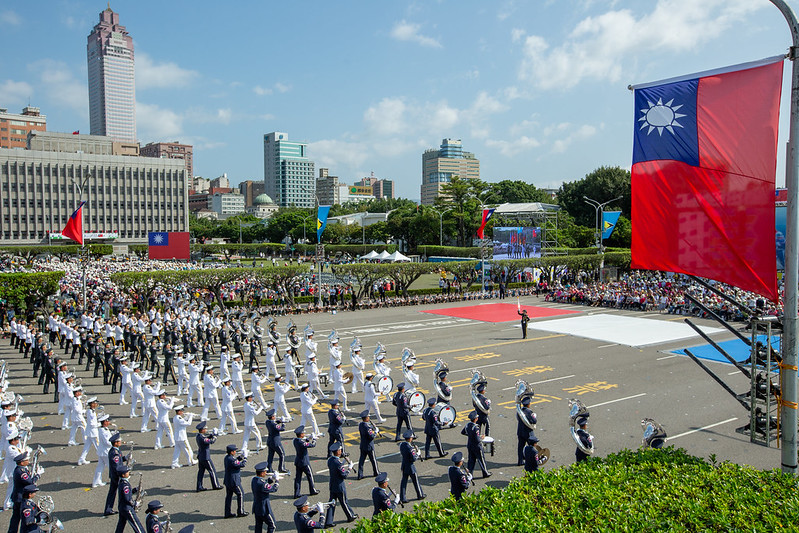U.S. arms sales to Taiwan have both defensive and political value. While President Trump’s current infatuation with China makes it unlikely that Washington will allow a major arms transfer in the short term, Taipei should already be preparing for the day when the American president realizes that Beijing isn’t the ally he was hoping for.
With U.S. President Donald J. Trump currently fixated on North Korea and convinced that China’s help in the matter is indispensable, the prospects of an early arms sale to Taiwan — always an irritant in relations between Washington and Beijing — have gotten dim.
Following months of campaigning on a stridently anti-China agenda, Trump, now that he is in the Oval Office, has not only softened his stance but appears to have been charmed by President Xi Jinping, as have several officials in his administration who have lucrative relationships with China. Many fear that the Trump administration has now embarked on a strategy to appease the Chinese. For example, soon after Trump’s meeting with his Chinese counterpart at Mar-a-Lago last month, the U.S. Navy was denied permission to continue freedom of navigation patrols in the disputed South China Sea, a move seen by many observers as a yet another of many concessions to China.
But once President Trump, like all his predecessors since Bill Clinton, realizes that Beijing is not and never will be the solution to resolving the North Korean issue, and once his administration awakens to the fact that China’s assertiveness in the region, which is making many allies skittish, will not abate regardless of the ostensibly friendly ties with Washington, the U.S.’s relationship with China will likely return to the status quo ante. Whether it takes months or a few years for the Trump administration to come to this conclusion, it will happen. And when it does, the likelihood that the U.S. will be willing to re-engage the region, and on Taiwan specifically to release an arms package, will increase.
No time to waste
Rather than be discouraged by the current stasis and “chaos,” as many have described it, in Washington, Taiwanese officials based in the American capital and back in Taipei should already be hard at work preparing a letter of request based on the nation’s current and future defense needs, one that goes beyond what was contained in the stillborn package touted during President Obama’s last months in office. And they should be redoubling their outreach to their allies in industry and Congress — whose role when it comes to Taiwan will only become more important in future — to build enough momentum.
As always, U.S. arms sales to Taiwan serve the twin purpose of strengthening the island-nation’s defensive capabilities and reaffirming American political support under the Taiwan Relations Act and the Six Assurances. If, as is now likely, the Trump administration follows the advice of the indefatigable Henry Kissinger and proceeds to sign a Fourth Communiqué with the People’s Republic of China, Taiwan will quickly need a hugely symbolic success with Washington to bring back some balance in the triangular relationship. Barring other alternatives, such as a Seventh Assurance, a substantial arms package could be the medicine that is needed.
Several options have already been laid out, including the F-35 stealth fighter, which President Tsai Ing-wen recently mentioned in an interview with foreign media. That such an article would be released to Taiwan, however, is highly questionable due to its prohibitive cost and the fact that the F-35’s capabilities put the aircraft in the strike fighter category and therefore beyond the scope of the defensive articles permitted under the TRA.
While revisions to what it allowed under the TRA is another area where Taiwanese officials could make long-term gains, more immediate defense considerations can and should be addressed in any future arms package. Among other things, Taiwan’s Army needs a new Main Battle Tank (MBT), but on this one help is unlikely to come from the U.S. as the U.S. Army is itself looking for one. Thus, while this creates an opportunity for Taiwan’s defense industry to play a role in the production of a new MBT (and positioning Taiwan in the global supply chain is an area that Taipei should definitely explore), it will be years before an acquisition is made. U.S. technical assistance with Taiwan’s indigenous submarine program, or in developing its own 5th-generation alternative to the F-35, are all desirable, but would not have the symbolic value attached to arms packages and would only yield concrete defensive results a decade or so from now.
Mobility, mobility, mobility
One area where Taiwan could score both political and defense points through a U.S. arms release is in air defense. Given the immense threat posed by China’s ballistic missile arsenal, what with the estimated 1,500 short- and medium-range missiles aimed at Taiwan, Taipei cannot hope to ever achieve 100% protection. But it can lower its vulnerabilities and thereby take off the option of limited strikes and decapitation attacks by China. Its current air defense architecture — a combination of U.S.-made Patriot PAC-3 and domestically produced Tien Kung systems — has made progress on that front, but all those systems are limited by the fact that they are point-defense systems and therefore fixed. This is also true of Taiwan’s early-warning radar systems that form the underbelly of its air defense architecture: while formidable, the long-range EWR on Leshan in Hsinchu is a fixed target that likely would be among the first to be wiped out in a missile attack by China.
Besides contributing greatly to survivability by not being a fixed target, the AN/TPY-2 would constitute resolute political signalling on Washington’s part given, as we saw recently, Beijing’s reaction to the THAAD deployment in South Korea.
Therefore, as Taiwan continues to expand its air defense capabilities by adding layers and missile batteries, it also needs radar survivability and dispersibility. The solution, therefore, is something akin to Raytheon’s AN/TPY-2 X-Band radar used with the Terminal High Altitude Area Defence (THAAD) system recently deployed in South Korea. The AN/TPY-2 is a mobile (or “transportable”) radar that can provide end-to-end coverage of short- (and according to the manufacturer, medium- and intermediate-) range ballistic missiles in either “forward-based” or “terminal” mode. Besides contributing greatly to survivability by not being a fixed target, the AN/TPY-2 would constitute resolute political signalling on Washington’s part given, as we saw recently, Beijing’s reaction to the THAAD deployment in South Korea (primarily due to fears that the system could be used to intercept Chinese ICBMs), while remaining comfortably within the defensive scope of the TRA. While no game changer, the AN/TPY-2 or a system with similar capabilities would constitute the kind of forward-looking arms transfer that keeps Beijing on its toes.
While such a release is unthinkable in the current political atmosphere, things could change rather quickly contingent on future Chinese behavior in the Asia Pacific (East and South China Sea) and on how long Beijing succeeds in hypnotizing the Trump administration on the North Korea issue. Moreover, China’s ultimate goal remains unchanged, and that is to expel the U.S. from the Asia Pacific altogether. Unless President Trump sees no role whatsoever for the U.S. in Asia, Beijing’s ambitions will eventually clash with those in Washington and contribute to the end of President Trump’s honeymoon with his Chinese paramour. Until this happens, Taiwan needs to hold the line and to lay the groundwork in preparation for that day of reckoning. It cannot afford to waste time or to get discouraged over what very likely is an ephemeral warming-up of U.S.-Sino relations.
Top photo courtesy of the ROC Armed Forces.
You might also like
More from Cross-Strait
Taiwanese Celebrities Who Bow to China: A Tempest in a Teapot
Taiwanese entertainers Ouyang Nana and Angela Chang have sparked controversy in Taiwan over news that they will perform at China’s …
In Memoriam: Lee Teng-Hui and the Democracy That He Built
The former president of Taiwan is the incontestable refutation of the belief that history is merely an impersonal force, that …
The Making of ‘Insidious Power: How China Undermines Global Democracy’
A new book released on July 30 takes a close look at the agencies and mechanisms of CCP 'sharp power' …









